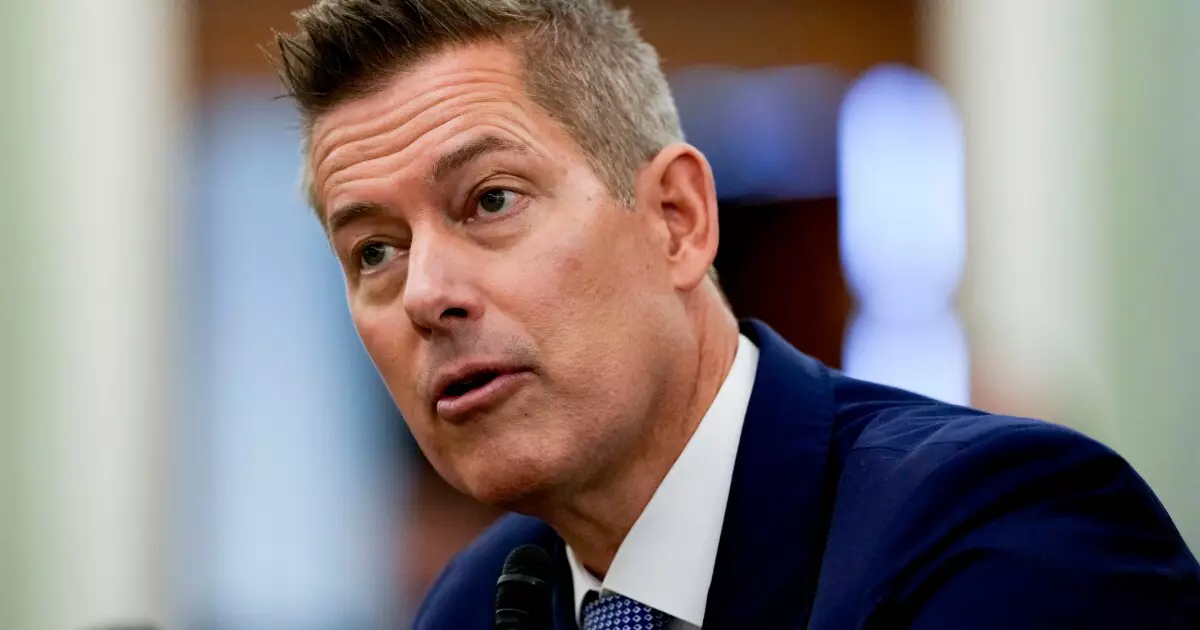The recent announcement from the U.S. Department of Transportation (DOT) signals a significant pivot in the country’s approach to infrastructure funding. Rather than financing projects molded by stringent environmental and social equity mandates, the current administration is choosing to return to a more traditional model of funding predicated on formula allocations. This dramatic shift illustrates a larger ideological battle around governance in America, contrasting the current administration’s interpretation of federal responsibilities against the backdrop of its predecessor’s policies. The declaration, articulated by Transportation Secretary Sean P. Duffy, encapsulates a critical point: the reestablishment of a system focused primarily on facilitating commerce and mobility, diverging sharply from what many have categorized as the ‘overreach’ of environmental initiatives during the Biden administration.
Critics of the previous regime argue that the emphasis placed on an environmental agenda was not merely misguided but also counterproductive, hindering essential infrastructure development while prioritizing radical social equity over practical needs. This approach, they contend, diluted the effectiveness of these projects, leaving too many roads, bridges, and highways neglected in favor of initiatives that did not offer tangible benefits to the average American.
Policy Implications for State Governance
The rescission of the memos from the previous administration enables a return to the long-standing paradigm wherein transportation policies are federally supported yet remain state-administered. This not only alleviates the regulatory burdens placed upon states but also restores certainty to contractors who rely on a streamlined funding process. Alex Etchen, an authoritative voice from the Associated General Contractors of America, underscores this sentiment, asserting that this shift “eliminates the uncertainty those memos brought.” Such clarity is vital, especially amid the ongoing challenge of maintaining the Highway Trust Fund, which is increasingly under pressure due to stagnant gas tax revenues and rising inflation.
The proposed policies highlight a consistent theme: reliance on state discretion rather than federal micromanagement. As legislators and stakeholders discuss the future of surface transportation legislation, it is apparent that many share a growing disdain for overly complex grant systems. Instead, they yearn for a straightforward funding mechanism bolstered by longstanding fuel taxes, which proponents claim fosters efficiency and minimization of bureaucratic entanglements.
The Fiscal Integrity of the Highway Trust Fund
Rethinking the funding model is not just a matter of preference; it’s an urgency that reflects the precarious financial state of the Highway Trust Fund. With the Bipartisan Infrastructure Law infusing $118 billion into the fund, there is a looming expiration date in 2026. The crux of this issue is that the gas tax—responsible for generating revenue for the fund—has remained stagnant since 1993, despite escalating costs and inflation. Lawmakers must face this reality head-on, building a more sustainable framework that encourages not just maintenance, but real growth in transportation infrastructure.
In conversations surrounding infrastructure, it is essential to focus on the fundamentals: roads, bridges, and transportation systems that directly affect the day-to-day lives of citizens. House Transportation Committee Chair Sam Graves echoes this urgency, emphasizing a need for a magnified focus on traditional infrastructure rather than less critical avenues such as bike lanes that often serve niche populations rather than the broader public.
Electric Vehicles and Funding Shortfalls
Compounding the complexity of infrastructure funding is the emerging landscape of electric vehicles (EVs), which, while critical for progressive environmental aims, contribute no revenue to the gas tax. This blind spot presents a unique dilemma; as more drivers transition to EVs, the existing funding mechanisms face further deterioration. The absence of a robust federal policy addressing this shift in vehicle ownership necessitates an urgent reevaluation of how transportation funding is structured moving forward.
Senator Shelley Moore Capito has been vocal in advocating for a stronger emphasis on formula funding rather than discretionary appropriations, arguing that sound state-driven decision-making is crucial for sustainable infrastructure development. Her position is indicative of a larger faction that favors tangible, long-term solutions over ephemeral political initiatives.
Calls for Accountability at the FAA
While infrastructure funding is critical, it is crucial to note the underlying issues within the DOT itself. Recently, Secretary Duffy announced an investigation into allegations surrounding Diversity, Equity, and Inclusion (DEI) hiring practices at the Federal Aviation Administration (FAA). Such an investigation raises pressing questions about operational priorities and accountability. If these claims prove substantiated, they lay bare the consequences of misplaced priorities within a critical federal department.
In understanding these dynamics, it becomes clear: America’s transportation infrastructure is at a tipping point. A delicate balance must be found between fiscal responsibility, environmental considerations, and the overarching goal of enhancing public safety and mobility. The coming years will be formative, shaping not just what we build, but how we navigate the complexities of funding infrastructure in a rapidly evolving landscape.

